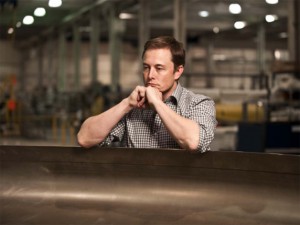Tesla stock has surged about 14% this week, largely driven by news that a long-time critic is suddenly singing a new tune.
Activist short-seller Andrew Left has long held a negative view on the California carmaker but this week wrote that Tesla is “destroying the competition,” while adding that “warning signs” that have scared off many other investors “have proven not to be significant.”
Left and other Tesla bulls could find out if they’re placing the right bets when the company reveals its third-quarter earnings this evening. What professional gamblers might call a significant “tell” is the fact that Tesla has decided to move up the release of its financial report which originally wasn’t expected until early next month. Instead, it will be released today at 6:30 PM EDT.
Tesla CEO Elon Musk has repeatedly promised to deliver a profit, as well as positive cashflow, for the second half of 2018. What will be revealed this evening is far from certain, though the general consensus is that, at best, the company will sharply narrow the record losses it experienced during the first half of the year. Every one of the 15 analysts who track Tesla anticipate more red ink, with the company forecast to deliver a net loss of $173.8 million, or $0.95 a share.
“We’d be really very surprised if they posted a profit for the third quarter,” Garrett Nelson, an analyst with CFRA Research wrote in an advisory to shareholders. “This is a company that lost over $3 per share each of the last two quarters. To go from that to all-of-a-sudden profitable would take a dramatic improvement.”
Tesla has so far delivered a profit only twice since it went public on June 29, 2010, the last time surprising analysts by coming in 21% about the Wall Street consensus for the third quarter of 2016. Even simply trimming its per-share loss by two-thirds compared to the first two quarters of 2018 would likely be seen as a positive sign by many observers. The question will remain whether Musk and company can push the automaker over the top during the final three months of the year.
What should be key to meeting the 47-year-old CEO’s goal will be continuing strong demand for the Model 3 sedan, as well as steadily improving factory output. The losses during the first half of 2018 were clearly worsened by what Musk had dubbed the “production hell” at Tesla’s Gigafactory battery plant in Reno, Nevada, and its assembly line in Fremont, California. The company appears to have been working out those kinks since mid-year, the Fremont plant now pouring out more than 6,000 vehicles a week.
That is still well short of the original 10,000 target Musk had planned to reach around now, and it will take more investment to get there. That raises one of the concerns that the bears still point to: a limited cash horde that might yet force Tesla to seek new capital.
And there are other concerns:
- It is yet unclear whether Tesla is bringing in enough new orders to match its growing production schedule, especially as it starts to fulfill its original order bank. The company recently added a new, lower-priced version of the Model 3 that could help expand its appeal;
- But Tesla is facing growing competition for not only the Model 3 but its older Models S and X. That includes new long-range offerings from Jaguar, Mercedes-Benz and Audi, with General Motors expected to launch two more models next year and new offerings coming from Volkswagen and others;
- The Trump administration’s tit-for-tat trade war with China has resulted in tariffs on U.S.-made vehicles jumping from 25 to 40 percent, resulting in lower Tesla sales and earnings there. The company plans to build a plant in Shanghai but it remains several years from production.
Despite such potential stumbling blocks, newly converted Tesla bull Left said he’s not worried. “Tesla will be generating more than enough cash to fund both aggressive growth plans and build cash on the balance sheet,” he wrote in the Citron blog, adding that, “As much as you can’t believe you are reading this, we can’t believe we are writing this.”
Ironically, Left was one of the short-sellers whose stake was hammered when Musk announced his intent to take Tesla private in August, a short-lived plan that was aborted just weeks later when the CEO had to admit there was no real strategy in place, despite having tweeted “Funding secured.”
The SEC has since fined Musk and a settlement he agreed to calls for him to relinquish his post as Tesla board chairman. Meanwhile, several lawsuits have been have filed against the carmaker alleging his privatization plan was really just a scheme to hurt short-sellers. One of the suits was filed by Left and he plans to continue pushing it through the courts.

